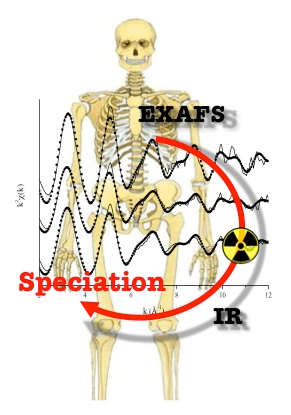Human Radiochemistry
Study the modes of interaction between the most critical radioelements (uranium, plutonium for example) and the biochemical cycles, the vectors favoring direct human incorporation (accidental or chronic contamination) or indirect (through our exchanges with the environment, chain eating).
Human radiochemistry
In the event of accidental or chronic human contamination, current actinide decorporation strategies (treatments using a chemical substance capable of eliminating radioactive or toxic elements incorporated by the body) are relatively effective. To establish decorporation or prevention strategies that are more effective, applicable and available in all circumstances (civilian population, military, on a large scale or not), it is above all necessary to better understand the processes of exchange towards the target organs. However, to date, very few data allow this mechanistic approach to contamination because the majority of studies have focused on developing biokinetic models. Certainly they are essential, because they describe in a macroscopic way the fate of the metal and its distribution in an organism. But they must be complemented by a molecular-scale approach that describes the biochemical mechanisms underlying these distributions.
The skeleton is the major accumulation compartment for all actinides, regardless of their degree of oxidation (except for Am(III) mainly stored in the liver). Medical studies on uranium toxicity have shown that most patients exposed to this element have developed kidney failure or bone disease. In the latter case, the hypothesis is that at the molecular level, osteopontin (OPN) – a newly identified human target protein – could play an important role in the in vivo accumulation of uranium but also of other actinides. such as plutonium in areas of bone growth.


